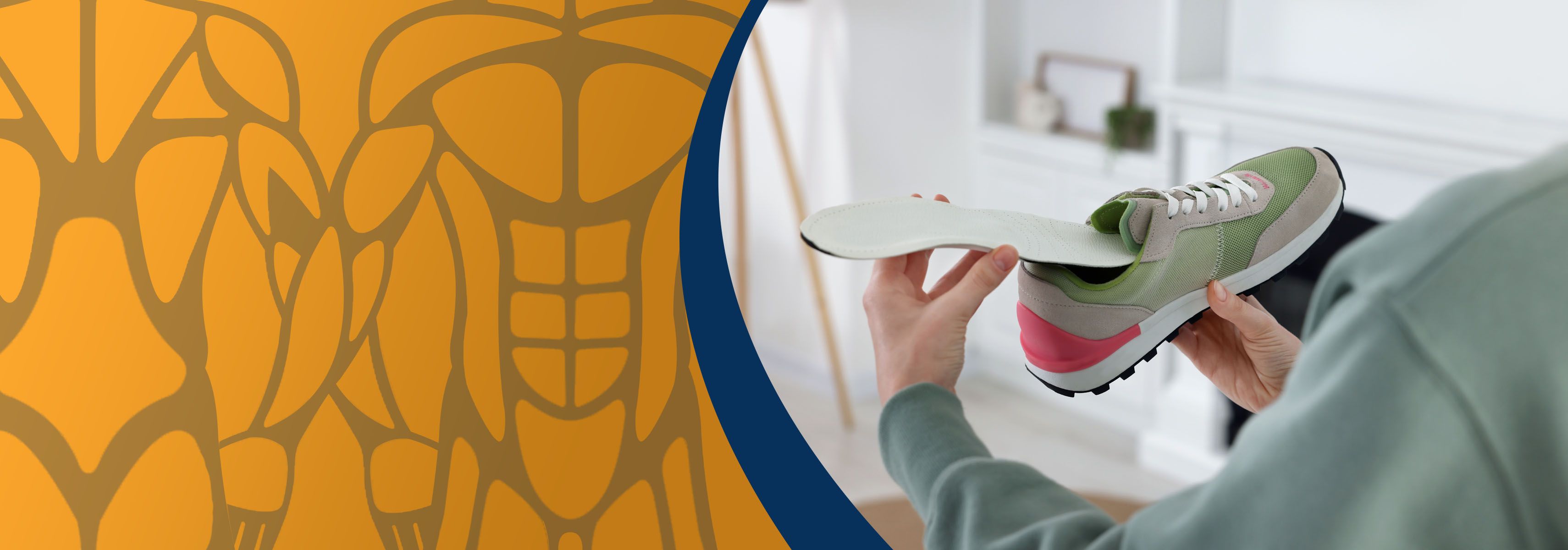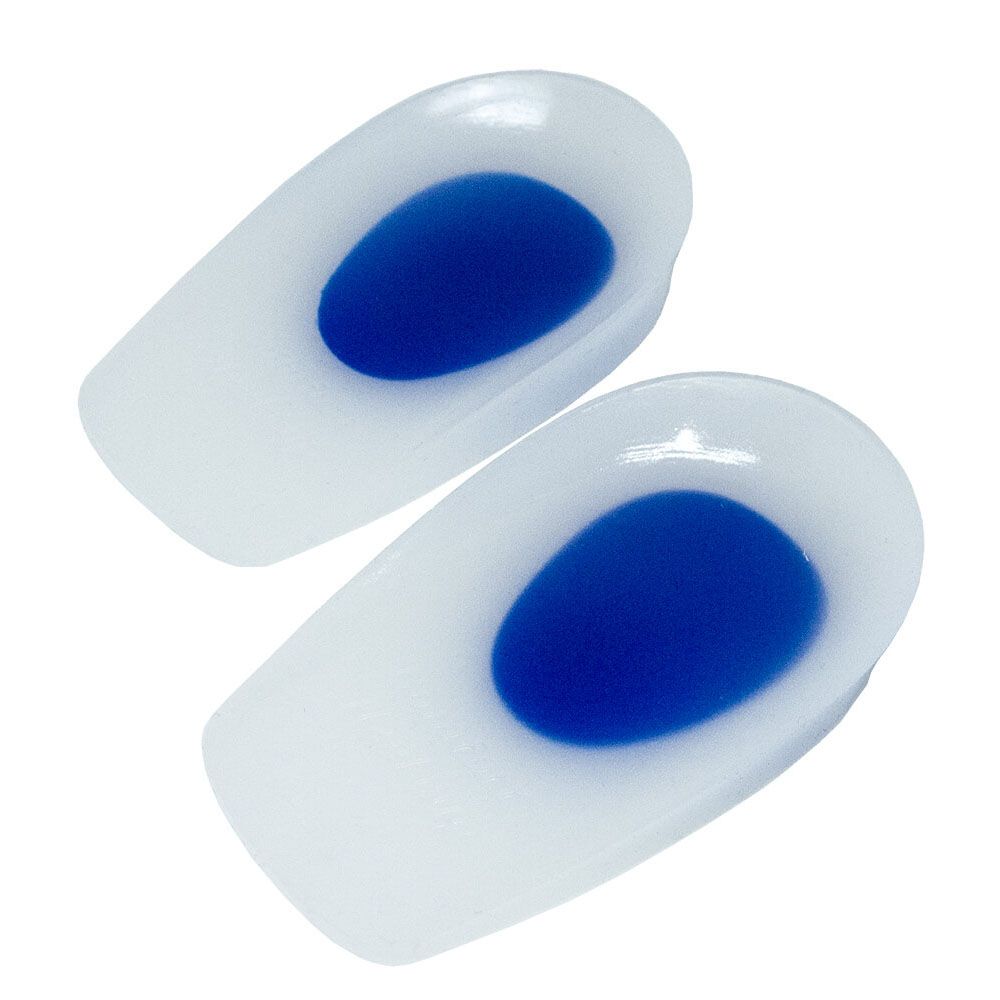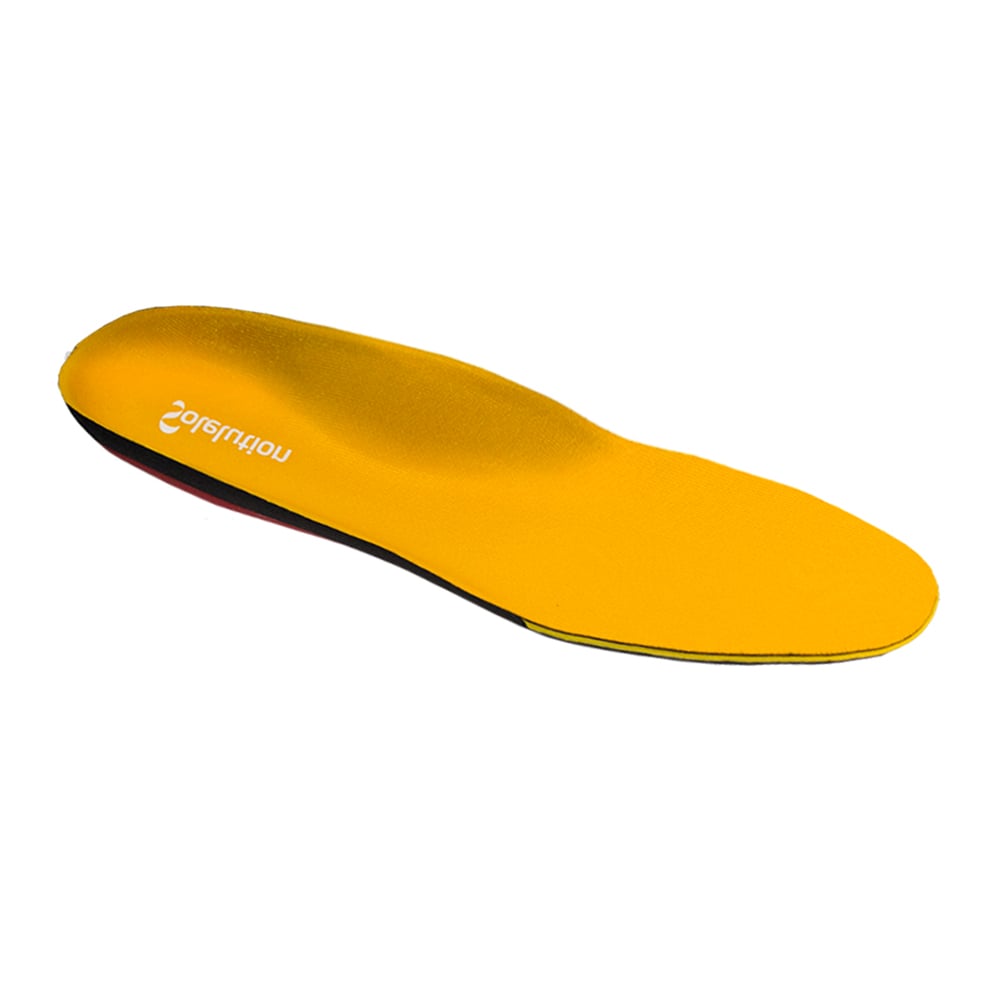Podobrace has a wide range of insoles. Insoles can help with many different complaints. But which insoles are used for what? And which one is suitable for my complaint? These are questions we will answer using this list.
The half heel spur insole
Pain in the heel, need for extra support at the back of your foot, irritation around the Achilles tendon or extra need for comfort due to long-standing? Then Podobrace's half insoles are the solution. These insoles are also very effective when you suffer from Sever's disease, heel spur or leg/spinal joint pain. Finally, these insoles can be used to compensate for a leg length difference of 0.5 cm. Do one or more of these complaints apply to you? Podobrace's half gel insoles offer the solution. They can be worn in any kind of shoe, are made of a breathable material for odour dissipation, and provide superior shock absorption while walking. Podobrace's half heel spur insoles minimise the pain in your heel.
The flatfoot insole
Suffering from X-legs, unstable ankles or a tired and burning feeling in the feet? Then the flatfoot insole is for you. The insole provides optimal cushioning and offers stability for the wearer in multiple ways. With support for both the front, back and outside the foot, the flatfoot insole stands in for optimal stability. In addition to these complaints, the flatfoot insole offers support when you suffer from over pronation. This is when a person's weight comes down on the outside of the foot and then 'rolls' inwards. The Podobrace flat foot insole offers relief and support for the above complaints, can be used daily and has maximum moisture absorption, preventing unpleasant odours.
The insole for sagging feet
In case of a burning sensation, stabbing pain in the forefoot or instep, the sagging foot orthotic is the answer. A tingling sensation or a congenital defect in the toes are also possible complaints that can be relieved by using this insole. Examples of congenital anomalies are hammer or claw toes. Other complaints that can be relieved are splayed foot and a painful feeling between the metatarsals. Besides these complaints, the insole for a sagging foot also helps with over pronation. Due to the abrasion resistance and moisture absorption of the material of this insole, they are extremely suitable for daily use. Thanks to the Brush-nylon finish, the wearer experiences no friction when wearing the insole. Comfort for the wearer comes first at Podobrace.
The hollow foot insole
Suffering from a crooked heel, pain in the forefoot, unstable ankles and an abnormally high instep caused by extreme hollowing in the foot? These are examples of complaints that come with a hollow foot. One solution to these problems is the hollow foot insole from Podobrace. Other symptoms of a hollow foot are calluses, corns and a shortened Achilles tendon. A shortened Achilles tendon causes all the weight to fall on the forefoot, resulting in a painful and burning sensation. The hollow foot insole offers relief due to its dynamic material and anatomical design.
The hollow foot insole for a high instep and sagging foot
This combination insole is the ultimate solution when complaints are experienced that indicate both a hollow foot sole and sagging foot. These complaints include heel misalignment, unstable ankles, tingling or deviating toes or pain between the metatarsals. Furthermore, you may still experience a painful or burning sensation on the outside of the foot and near the big toe and complaints in the knee joint. These complaints can also be relieved by using this insole. It provides both parts of the foot, both forefoot and outer edge, with enough support due to the dynamic design of the insole. The hollow foot insole also provides shock absorption while walking and standing. In addition, it dissipates unpleasant odours due to its breathable material.
The over pronation insole for inward-turning feet
Over pronation is when the foot tilts too far inwards (pronates) when the foot comes down in the landing phase. The main cause of heel spur is over pronation. The arch of the foot sags too far, putting abnormal pressure on the tendon plate in the foot. This results in pain in the foot, ankles, knees and hips. This is because over pronation causes a chain reaction in the body: the ankles turn inwards as the foot is placed from outside to inside. This rotation radiates to the knees and automatically to the hips. As a result, these body parts also become unstable. The over pronation insole for inward-facing feet from Podobrace corrects the foot by supporting it outwards. In this way, the foot is once again straightened and the wearer experiences optimum stability.
The under pronation insole for outward-facing feet
Under pronation is when the foot does not tilt inwards enough (pronate) when coming down in the landing phase. Under pronation is also known as supination. The outside of the heel comes down at too great an angle, so the foot does not absorb the shocks enough. These shocks land on the lower leg. Causes of under pronation include incorrect foot position, misalignment of the legs, unstable ankles and a jammed calf bone. This can also result in knee and back pain because of its radiating effect. Podobrace's under pronation insole corrects the under pronation of the foot. Using the dynamic design, the foot is corrected. This insole also provides maximum shock absorption and flexibility. So you experience optimal walking comfort while wearing the under pronation insole. This insole also has a ventilating effect to prevent feet from becoming smelly.
The insole for hallux valgus and rigidus
Hallux valgus can be freely translated to the big toe growing crooked. Hallux rigidus is when the big toe grows upwards. Besides these two complaints, the orthotic for Hallux valgus/rigidus offers relief for gout, (cold) pain and osteoarthritis in the toes. It can also help with restriction in freedom of movement of the big toe and complaints in the ball of the foot, such as a burning sensation. In addition, this insole offers a solution when someone suffers from Freiberg/Köhler disease. This disease means that the bone tissue of metatarsal bones disappears. The Hallux valgus/rigidus insoles from Podobrace are comfortable and can be used well in combination with toe splints and spreaders. The cushion on which the forefoot rests relieves the toes and provides more space for them. The orthotics work shock-absorbing, allowing them to be worn daily during various activities. In addition, Podobrace support insoles regulate heat for optimal wearing pleasure. Finally, they are also antibacterial, minimising the risk of inflammation.








